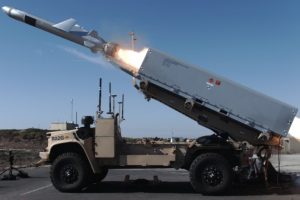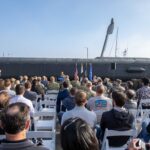
A top Marine Corps official Wednesday said that early next year the service plans to test an autonomous vessel moving a few Naval Strike Missiles (NSMs) to shore to reload ground-based Marine Corps batteries. At the Project Convergence Capstone 4 (PCC4) event, due to occur around February - March 2024, the Marine Corps will bring its experimental Autonomous Low Profile Vessel that “has a lot of promise,” Lt. Gen. Karsten Heckl, Deputy Commandant for Combat Development and Integration, said during…

 By
By 











